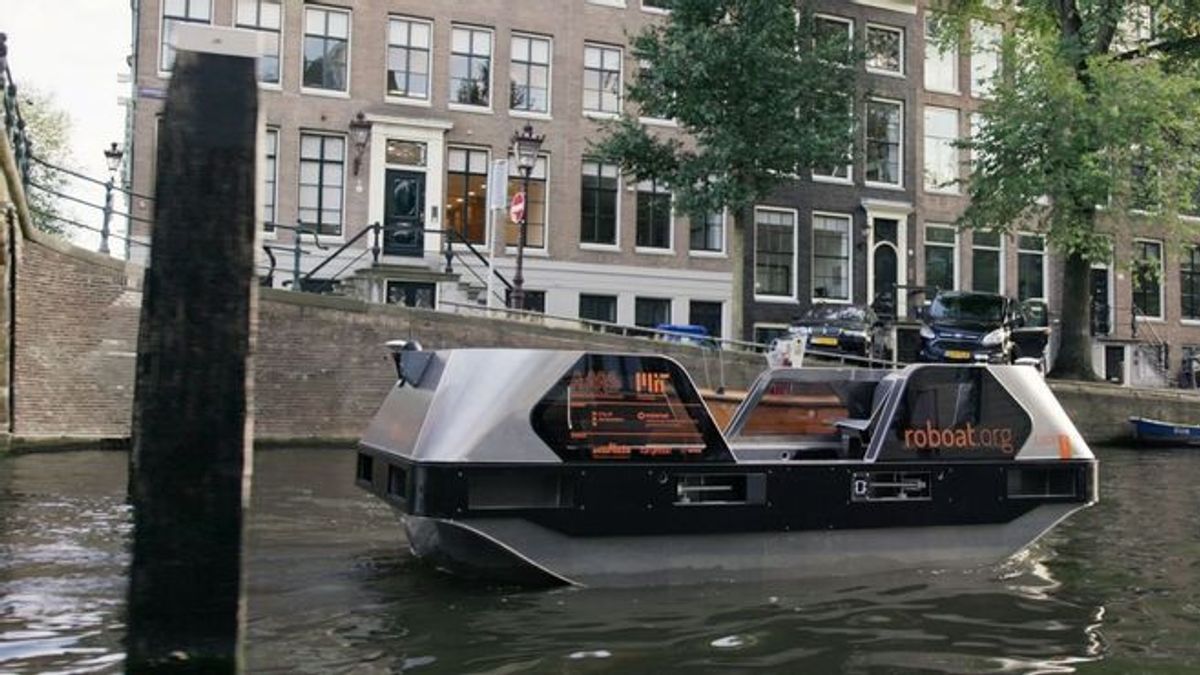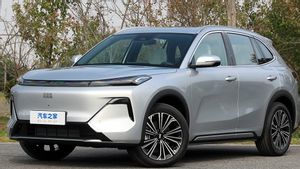JAKARTA – The City of Amsterdam in the Netherlands is testing two full-size prototypes of the 'Roboat' - a fully autonomous, and modular electric boat that can be transformed and adapted to serve different purposes at different times.
Although electric cars are now more common, electric boats are still relatively rare let alone a fully autonomous boat. However, their number continues to increase as people look for more efficient boats that are cheap to operate and less harmful to the environment.
It is understood that more than 1,000 maritime autonomous surface ships (MASS) are operational, as of September 2021. When it comes to electric ships, they are mostly limited to ferries and small passenger ships in inland waters.
That's because the enormous power requirement to operate a large container ship means that an electric ship, must have a very large battery. This becomes impractical for power-hungry operations such as hauling cargo over long distances.

Now two prototype "Roboats" have navigated Amsterdam's massive canal network over the past few weeks as part of a research project by the Massachusetts Institute of Technology (MIT).
The program aims to determine whether ships can offer a clean and efficient way to transport people as water taxis and collect garbage as part of a waste management system.
The modular construction helps the Robot to perform different functions, with seating for a five-person water taxi or garbage collection bin that is swapped in or out, while the universal hull remains underneath.
Robotat was developed by MIT's Computer Science and Artificial Intelligence Laboratory (CSAIL) and the Senseable City Laboratory in collaboration with the Amsterdam Institute for Advanced Metropolitan Solutions (AMS).
A portmanteau of the words 'robot' and 'boat', the Roboat can not only transport people and collect garbage, but can also be linked together to become a floating bridge. These vessels are also modular and can have interchangeable tops to serve different purposes.
Speaking with CNET, Carlo Ratti, MIT professor and Director of the Senseable City Lab, said that ships will eventually be controlled with touchscreen interfaces like modern phones. According to Ratti, once the autonomous water taxi service is operational, passengers simply enter their destination while boarding, and the Roboat will take them there.
The robot can operate for about ten hours on a single charge and can even be charged wirelessly. According to Roboat's official website, ships use lidar and a series of cameras for 360-degree views that help them navigate, much like autonomous cars do.
The vessel is currently under development, but there are plans for a commercial launch at some stage. However, according to Fábio Duarte, principal research scientist at MIT, the Roboat is not yet ready to hit the market, so it will be interesting to see when cities like Amsterdam or Venice will commercially operate these autonomous vehicles.
The English, Chinese, Japanese, Arabic, and French versions are automatically generated by the AI. So there may still be inaccuracies in translating, please always see Indonesian as our main language. (system supported by DigitalSiber.id)













